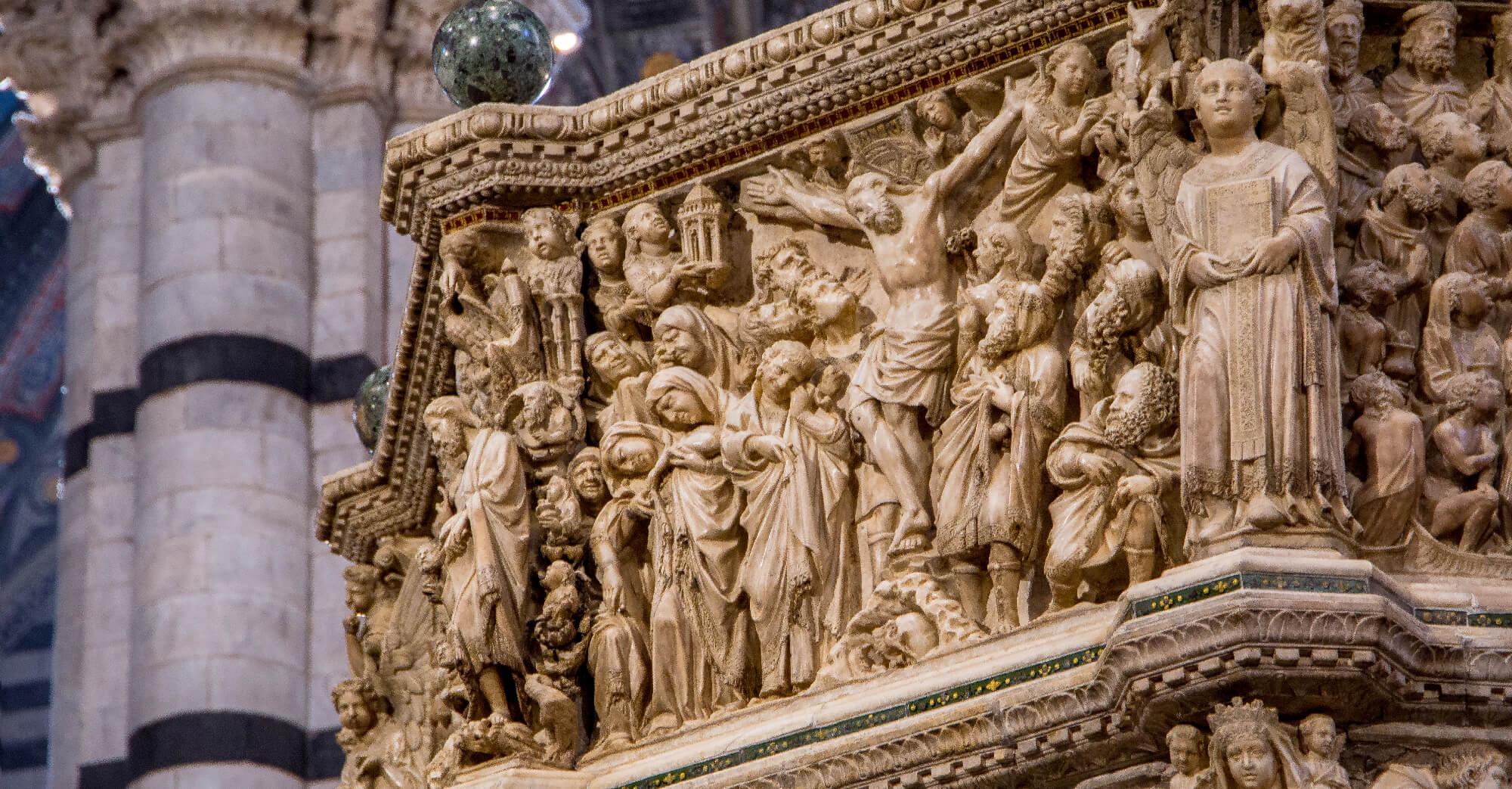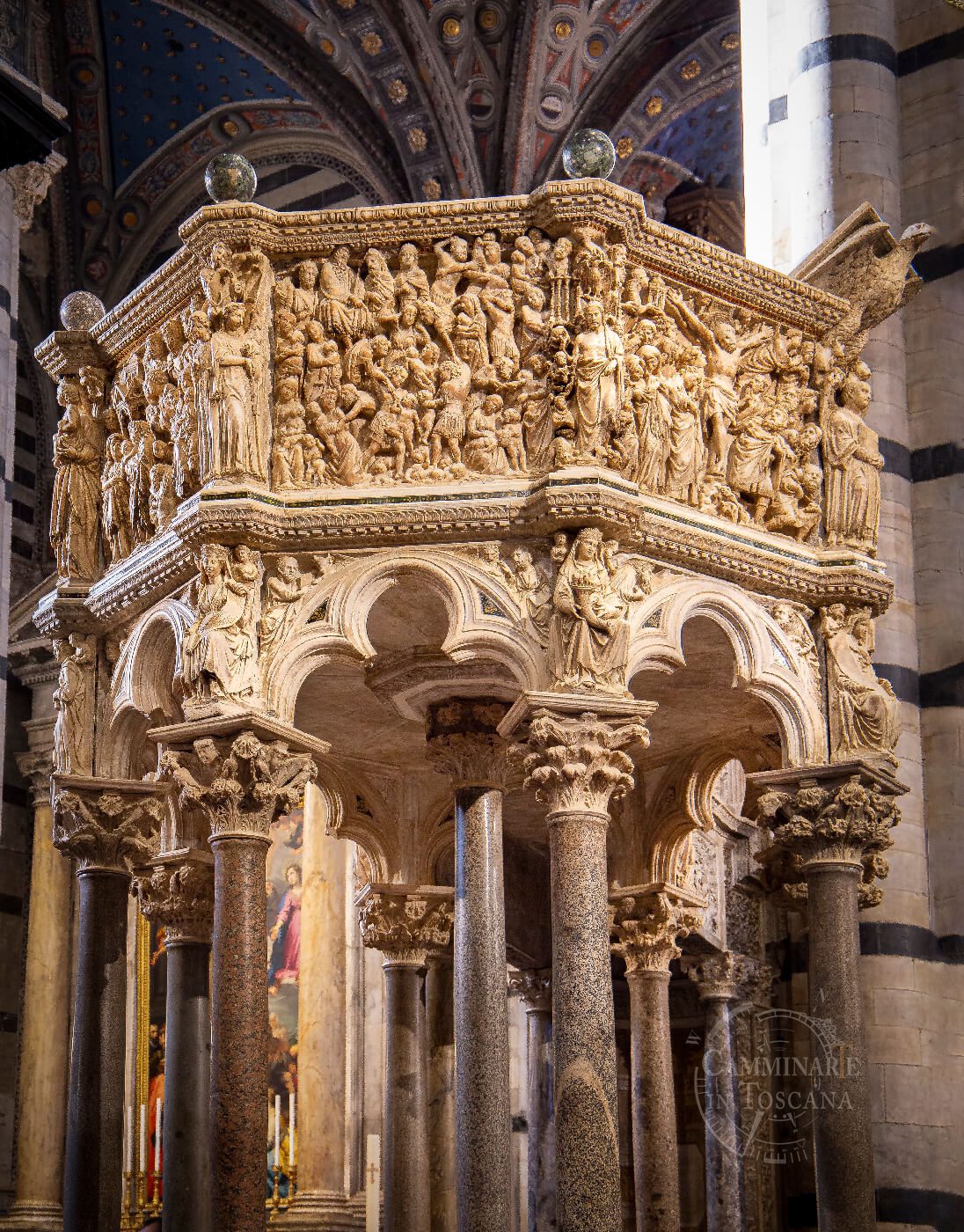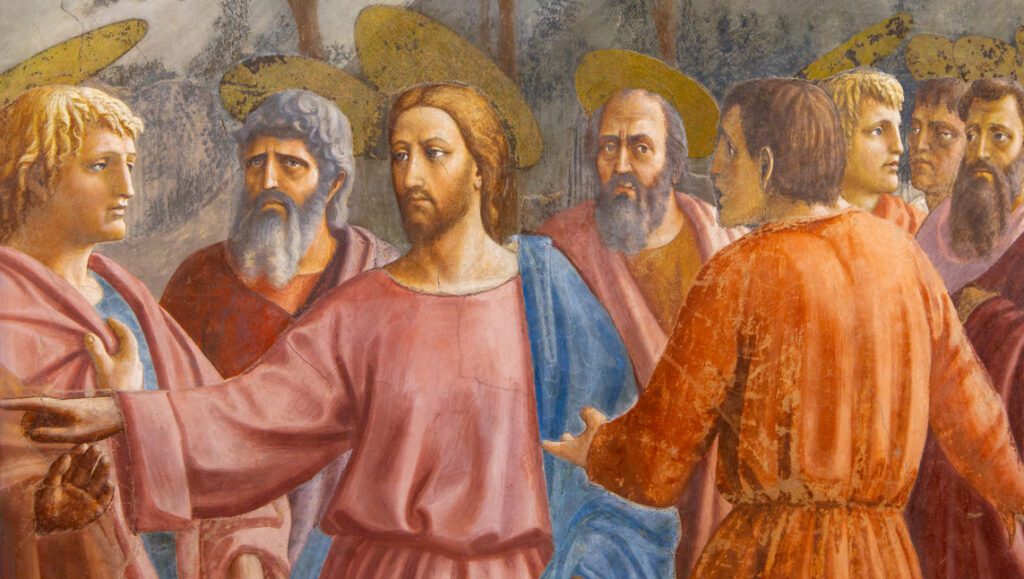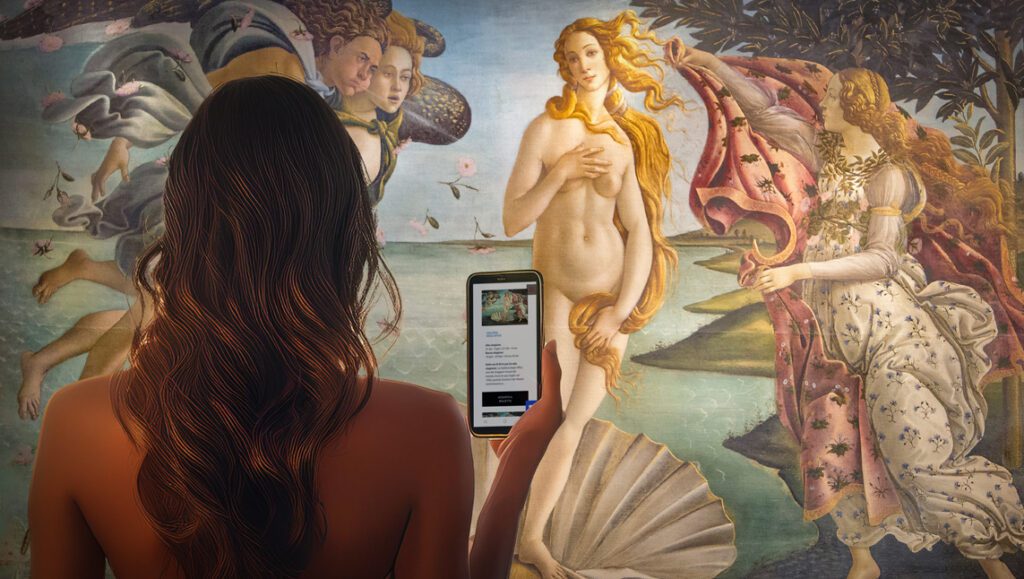
A masterpiece to see in the Cathedral of Siena
The marble Crucifixion is one of the must-see masterpieces that you can see in the visit to the Siena Cathedral. The relief is making part of the Nicola Pisano‘s pulpit, a great work of art made for the Cathedral of Siena between 1265 and 1268. To its making also collaborated the son of Nicola, Giovanni, and his great pupil Arnolfo di Cambio. It can be said that the Sienese pulpit widens the plastic research of the first pulpit that Nicola had executed for the Baptistery of the Cathedral of Pisa, between 1255 and 1260.
From an hexagon to an octagon
Between the two pulpits, there is not only a difference in the plastic yield but also in the composition, since the hexagon becomes an octagon in Siena; a shape that moves further and further away from the square of the “Romanesque” pulpits.
The composition of the stories of Christ, which are the stories of divine revelation, includes more ideologically related episodes; episodes that do not have an architectural caesura but that are linked:

Pulpit, Nicola Pisano, Cathedral of Siena
Nicola avoids the mere succession of facts, since each carved history isolates a fact, synthesising the before and after, the causes and effects. It establishes a compositional centre, a nucleus of action that emphasises the figures for their historical identity. The various figures of the sibyls, as well as those of mythological characters, have complex meanings, whose precedents are found in the doctrinal and iconographic traditions of Lombard, Tuscan and French art.
And it is the latter that Nicola synthesises the elements, assimilating it with the classical Roman one. The artist had already confronted himself with classical models, when he worked in the field of Pisa, but in Siena he came to an extraordinary interpretation of Roman sources, not only in the balance of the composition but also in the dramatic harshness of history: you can see in this Crucifixion with strong dramatic tones, almost caricatured in some figures like the one at the bottom right.
A new motion featuring
Far from the motionless figures of previous featuring, here the masses of bodies shatter in the fast-paced rhythm of interlinked gestures and the continually broken line emphasises the movements and concentrates the expressive force of the faces. John’s desperation at the foot o the cross is in contrast to the fear of men on the other side.Finally, the unconscious Virgin shows her total resignation on her face, while she is being supported by the pious women behind her.
All the vitality and dramatic tension of the characters will be a peculiarity in the work of Nicola’s son, Giovanni, who will always create the wonderful first-order statues of the Cathedral façade of Siena. This amazing crucifixion of the Siena Cathedral, as well as the other art works of the church, can be seen through a guided tour of the city ⟢
Bibliography
G.C.Argan; Storia dell’Arte italiana, Ed. spec per il Corriere della Sera, su licenza di RCS Libri S.p.A. Milano, 2004; N.33, pp.451-453 (Italian edition)



